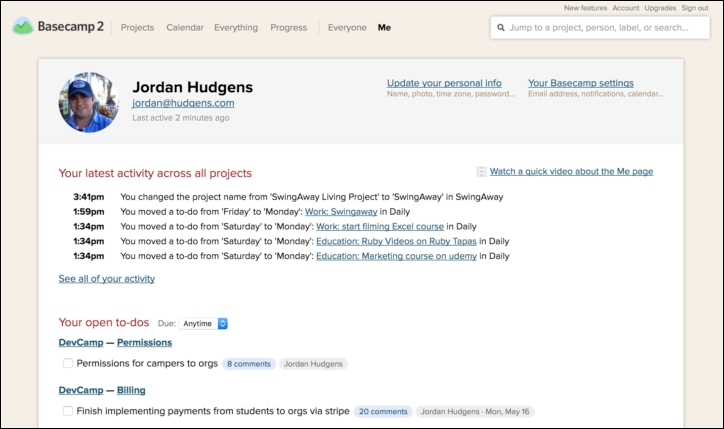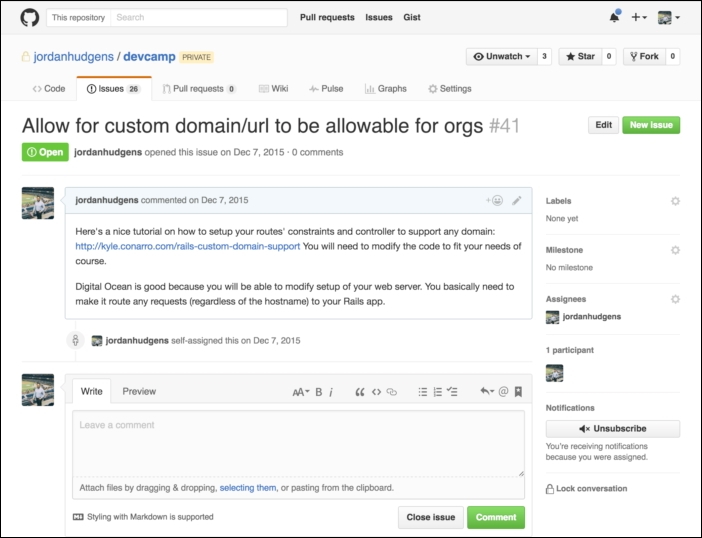In this chapter, I'm going to discuss the top project management tools I've used on coding projects. In preparing for this chapter, I went through some directories that listed all the known project management software applications on the market.
To be 100% honest, I was a bit shocked. There are literally thousands of project management options available to freelancers. Thankfully, I've been able to work for a number of clients and worked with various project management apps over the years.
For this chapter, I want to give you a list of the top project management tools along with their respective strengths and weaknesses. With this knowledge, you can decide on which one is the best fit for your project and freelance business.
The following are six of the top project management tools that I've used. I've probably used around a dozen tools; however, I only wanted to list applications that:
- I had actually used on production projects
- I had a good experience with and that I'd recommend to others
We'll now look at each tool one by one.
My favorite application for project management is Basecamp. I'm probably partial to it since its founder, David Heinemeier Hansen, also happens to be the creator of the Ruby on Rails framework, which I use daily:

With that being said, Basecamp has a clean interface focused around to-dos and messaging. Here is a set of the to-dos assigned to me and various DevCamp team members right now:

In addition to project management, I also use Basecamp as my daily planner. Essentially, I move each of my to-dos from one day to another. I like how I can have a number of my projects and their respective to-do lists all shown on one page, as shown here:

And for when I'm wanting a filtered list of what is assigned to myself, I can see only the projects that I'm tagged in as the owner:

For the negatives of using Basecamp, depending on your prior experience with project management software, Basecamp may not feel very natural. If you're used to dashboards based on Gantt charts and similar tracking mechanisms, Basecamp will take some getting used to.
It does have the ability to have all those features via their add-on module. However, at its core Basecamp focuses more on messaging between team members, to-do lists, and scheduling.
Basecamp also doesn't have the best suite of mobile options, I have its iOS app on my phone. However, it's not the most intuitive, especially when compared with a few of its competitors such as Trello.
With that being said, Basecamp is still my go-to choice when it comes to project management software due to its simplicity, speed, and because I'm drawn to its to-do list structure.
Another great tool that I've used on a large number of projects is Trello. Trello utilizes a Kanban style of project management. Kanban is a workflow popularized by lean manufacturing proponents, and at a high level it uses the concept of moving cards through different stages of a project's development until they're complete:

Trello essentially gives you a virtual Kanban board and lets you move tasks through each stage of the product development life cycle. For example, here in the image I would move a task from being a To-Do to being Assigned, to Working, to Under Review, and finally to Finished:

This approach makes it straightforward to visualize each task that's assigned to you, and it also has a good interface for managing a team of developers.
I also like how you can add images and attachments to tasks, which lets you encapsulate all of a task's conversations, data, and statuses in a single screen. Another bonus that Trello offers is that it works nicely on smartphones and tablets, so it's easy to track the progress of applications when you're not at your desk.
Trello has worked well for me on small-to-medium sized projects, but for large projects or complex applications I'll usually opt for Basecamp or the next one on the list: LeanKit.
When I was managing an entire IT organization, LeanKit was the software I went with for tracking the projects that were being worked on. It doesn't have the attractive user interface that Trello offers and it takes longer to learn.
However, it worked quite well for me when I was managing very large-scale projects, such as enterprise application rollouts to 800+ employees.
Much like Trello, LeanKit utilizes the Kanban strategy of project management. However, it focuses more on enterprises compared with smaller teams. The mobile and tablet applications offered by LeanKit were intuitive and helped me to manage projects even when I was traveling, which was a nice bonus.
LeanKit's strength is in how well it allows you to nest and organize projects and subprojects. After you've learned how the system works, it's relatively straightforward to manage large teams.
One of the biggest negatives of LeanKit was something that I considered very odd. They have a pretty archaic method for payment that requires quite a bit of manual work. I remember times where I was forced to contact the company via email simply to add new users to our account plan. This wasn't a deal killer for me. However, it does make it a poor choice for freelancers who want to work multiple projects from the same account.
ProWorkflow is one of the more standard project management options on this list of top project management tools. It does a good job of combining features such as timelines, task management, and working with teams. I only worked one project that utilized ProWorkflow. However, it was a good experience and I didn't have any complaints using the software.
I have a bit of a love/hate relationship with Wrike as a project management tool. If you're managing a team of developers, Wrike is a great application to use. As a project manager, you're able to use it to see the status of each project along with detailed analytics for every task that is being worked on.
However, if you are a developer working on Wrike, there is a pretty steep learning curve. I would like to think that I'm pretty adept at understanding how to use a new piece of software. However, I kept getting lost in Wrike's dashboard and had a difficult time finding where to post updates to clients. Eventually, I asked the client to go through a screen sharing session where we walked through each dashboard that I would use.
With all that being said, Wrike is a good option if you're managing a team of freelancers on multiple projects, and that's why I put it on this list.
This may seem like an odd option to put on a list of top project management tools since technically, GitHub doesn't market itself as project management software.
However, when I'm working on a project that only has developers, I've found that using GitHub's issue tracking module doubles as a project management tool:

And it makes sense since some of the largest frameworks and languages are open source projects that base all the tasks on issues and features that can be easily tracked on GitHub:

As you can see in this screenshot of a specific issue, you're able to:
- Create issues, which can also be features
- Assign users to each task
- Add links and images via the Markdown syntax
- Mark the issue as being completed
Additionally, with an experienced development team, using GitHub to manage a project has the added benefit of making task management efficient. For example, developers can close tasks automatically based on Git commits. And the easier you make a piece of software to use, the more development teams are going to like it.
